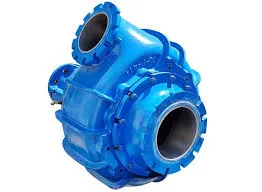Korean
- Afrikaans
- Albanian
- Amharic
- Arabic
- Armenian
- Azerbaijani
- Basque
- Belarusian
- Bengali
- Bosnian
- Bulgarian
- Catalan
- Cebuano
- Corsican
- Croatian
- Czech
- Danish
- Dutch
- English
- Esperanto
- Estonian
- Finnish
- French
- Frisian
- Galician
- Georgian
- German
- Greek
- Gujarati
- Haitian Creole
- hausa
- hawaiian
- Hebrew
- Hindi
- Miao
- Hungarian
- Icelandic
- igbo
- Indonesian
- irish
- Italian
- Japanese
- Javanese
- Kannada
- kazakh
- Khmer
- Rwandese
- Korean
- Kurdish
- Kyrgyz
- Lao
- Latin
- Latvian
- Lithuanian
- Luxembourgish
- Macedonian
- Malgashi
- Malay
- Malayalam
- Maltese
- Maori
- Marathi
- Mongolian
- Myanmar
- Nepali
- Norwegian
- Norwegian
- Occitan
- Pashto
- Persian
- Polish
- Portuguese
- Punjabi
- Romanian
- Russian
- Samoan
- Scottish Gaelic
- Serbian
- Sesotho
- Shona
- Sindhi
- Sinhala
- Slovak
- Slovenian
- Somali
- Spanish
- Sundanese
- Swahili
- Swedish
- Tagalog
- Tajik
- Tamil
- Tatar
- Telugu
- Thai
- Turkish
- Turkmen
- Ukrainian
- Urdu
- Uighur
- Uzbek
- Vietnamese
- Welsh
- Bantu
- Yiddish
- Yoruba
- Zulu
Telephone: +86 13120555503
Email: frank@cypump.com
12월 . 30, 2024 00:24 Back to list
hydrated lime slurry pumping
Understanding Hydrated Lime Slurry Pumping A Comprehensive Overview
Hydrated lime, also known as calcium hydroxide, is a versatile compound used in various industries, including construction, agriculture, and water treatment. When mixed with water, hydrated lime forms a slurry, which can be easily pumped and applied for different purposes. Understanding the techniques and considerations involved in pumping hydrated lime slurry is essential for ensuring efficiency and safety in various applications.
The Significance of Hydrated Lime Slurry
Hydrated lime is primarily used to neutralize acidic soils, enhance soil stability, and treat wastewater due to its alkaline properties. In construction, it acts as a binder in mortars and plasters. When it comes to water treatment, hydrated lime plays a critical role in removing impurities, softening water, and precipitating heavy metals. The slurry form of hydrated lime allows for easier transportation and application, making it an advantageous choice in various settings.
Properties of Hydrated Lime Slurry
Hydrated lime slurry is a combination of hydrated lime and water, typically present in a concentration ranging from 15% to 30%. The viscosity and density of the slurry can vary based on its concentration, which affects its pumping characteristics. Additionally, the particle size distribution of hydrated lime can influence the slurry's flow properties. A well-prepared slurry should have a uniform consistency to facilitate efficient pumping.
Pumping Hydrated Lime Slurry
Pumping hydrated lime slurry involves several key considerations
1. Pump Selection Choosing the right pump is crucial for efficient slurry handling. Common types include centrifugal pumps and positive displacement pumps. Centrifugal pumps are effective for lower viscosity slurries, while positive displacement pumps are better suited for thicker slurries with higher solid content. The selection should align with the specific application and desired flow rate.
hydrated lime slurry pumping

2. Piping and Fittings The materials used for piping and fittings must be compatible with the abrasive nature of lime slurry. Corrosion-resistant materials, such as stainless steel or rubber-lined pipes, are recommended to withstand the wear and tear of the slurry.
3. Slurry Preparation Properly preparing the hydrated lime slurry is vital for successful pumping. This involves accurately measuring the lime and water ratios, mixing the components thoroughly, and achieving a uniform consistency. Utilizing a high-shear mixer can enhance the mixing process and ensure that the lime particles do not settle.
4. Pump Maintenance Regular maintenance of the pumping system is essential to prevent breakdowns and ensure longevity. This includes inspecting seals, gaskets, and impellers for wear, as well as monitoring the system for any signs of clogging or leaks.
5. Operational Considerations During operation, maintaining a consistent flow rate is crucial. Sudden changes in pressure or flow can lead to issues such as sedimentation or pump cavitation. Implementing flow control measures and monitoring the system's performance can help mitigate these risks.
Safety and Environmental Considerations
Working with hydrated lime slurry requires strict adherence to safety protocols. The alkaline nature of hydrated lime can cause skin and eye irritation upon contact, necessitating the use of personal protective equipment (PPE), including gloves, goggles, and respiratory protection when appropriate. Additionally, proper ventilation should be ensured during the mixing and pumping processes to minimize dust exposure.
From an environmental standpoint, it is essential to handle lime slurries responsibly to prevent any adverse effects on surrounding ecosystems. Proper containment and spill response strategies should be in place to address any potential leaks or spills quickly.
Conclusion
Pumping hydrated lime slurry is a specialized process that plays a vital role in numerous industrial applications. By understanding the properties of hydrated lime, selecting appropriate equipment, and following safety protocols, operators can ensure efficient and effective slurry handling. As industries continue to utilize hydrated lime for its beneficial properties, mastering the art of pumping this versatile material will remain an essential skill for professionals in the field. By prioritizing safety, efficiency, and environmental stewardship, we can harness the full potential of hydrated lime slurry in our projects for a sustainable future.
-
High-Efficiency Submersible Effluent Pump for Sewage & Wastewater Solutions
NewsJul.08,2025
-
High Quality CH Warman Slurry Pump Factory - Leading Horizontal Slurry Pump Supplier
NewsJul.08,2025
-
Hot Sale Chemical Circulating Pump – Efficient & Durable Slurry Circulating Pump Solutions
NewsJul.08,2025
-
High-Efficiency Submersible Dredge Pump for Sand & Gravel Durable Dredge Slurry Pumps Solutions
NewsJul.07,2025
-
Wholesale Slurry Pump Impeller Supplier – High-Quality & Efficient Pump Parts for Enhanced Performance
NewsJul.07,2025
-
High-Efficiency Water Submersible Pumps Reliable Water Pump for Potable Water Supply
NewsJul.06,2025










